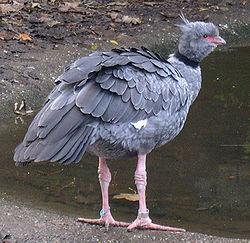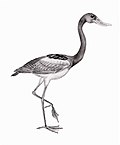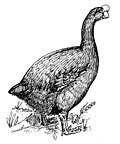| Chauna | |
|---|---|
 | |
| Southern screamer (Chauna torquata) | |
| Scientific classification | |
| Domain: | Eukaryota |
| Kingdom: | Animalia |
| Phylum: | Chordata |
| Class: | Aves |
| Order: | Anseriformes |
| Family: | Anhimidae |
| Genus: | Chauna Illiger, 1811 |
| Type species | |
| Parra chavaria [1] Linnaeus, 1766 | |
| Species | |
Chauna is a genus of birds in the screamer family. Its two members are found in wetlands of South America.





